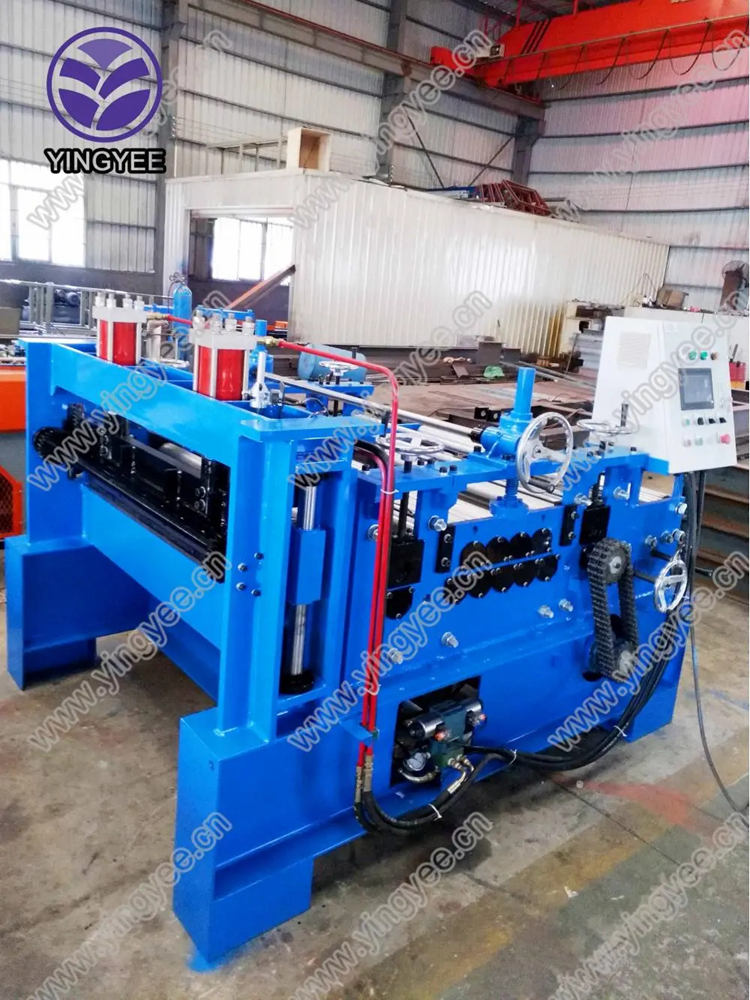
The Role of Composite Floor Deck Cold Bending Machines in Modern Construction
In the ever-evolving landscape of modern construction, efficiency and precision are paramount. One of the innovations that has significantly contributed to the optimization of structural design and construction methodologies is the composite floor deck cold bending machine. This sophisticated piece of machinery offers various advantages in the fabrication of composite floor decks, enhancing both the effectiveness of construction processes and the quality of the final products.
Understanding Composite Floor Decks
Composite floor decks are a type of flooring system that integrates metal decking and concrete to create a durable and effective floor structure. They are widely used in commercial and industrial buildings due to their ability to support heavy loads while remaining lightweight. The combination of steel and concrete not only provides superior tensile strength but also improves the overall thermal and acoustic insulation properties of the structure.
The design of these floor decks requires precise engineering to ensure that they can withstand various loads and stresses during their lifecycle. This is where the cold bending machine comes into play, providing manufacturers with the capability to create customized shapes and profiles that meet specific project requirements.
The Mechanism of Cold Bending
Cold bending is a process that involves the deformation of materials at room temperature, allowing for intricate shaping without the need for heating. Cold bending machines employ rollers and dies to produce the desired curvature in the metal sheets or decks. This technology is particularly beneficial in the manufacturing of composite floor decks because it allows for precise control over the bending process, minimizing the risk of material defects and ensuring consistency across large production runs.
One of the advantages of cold bending is its ability to maintain the metallurgical properties of the steel. Unlike hot bending, which can alter the structure of the metal, cold bending preserves its strength and structural integrity. This is crucial for composite floor decks, as any compromise in the steel's properties can lead to significant structural vulnerabilities.
Advantages of Composite Floor Deck Cold Bending Machines

1. Enhanced Efficiency The use of automated cold bending machines allows for high-speed production, which accelerates the manufacturing process. This efficiency translates to shorter lead times for construction projects, enabling builders to adhere to tight schedules.
2. Customization and Versatility Cold bending machines can be easily adjusted to accommodate various design specifications. This flexibility allows manufacturers to produce custom profiles that meet the unique demands of each project, ensuring that the final product aligns perfectly with the architectural vision.
3. Cost-Effectiveness By streamlining the bending process and reducing material waste, cold bending machines contribute to cost savings in both manufacturing and construction. This economic efficiency is especially important in large-scale projects where budgets are often tight.
4. Improved Quality and Consistency Advanced cold bending technologies offer greater precision than traditional methods. This results in a higher quality end product with fewer defects, reducing the need for rework and ensuring that the composite floor decks perform as intended.
5. Sustainability Modern cold bending machines often utilize energy-efficient technologies, reducing the carbon footprint associated with production. Additionally, the ability to maximize material usage minimizes waste, aligning with sustainable building practices.
Future Trends
As the demand for innovative construction methods continues to rise, the role of composite floor deck cold bending machines is expected to expand. Emerging trends such as Building Information Modeling (BIM) and automation in the manufacturing process will further enhance the capabilities of these machines. Manufacturers are increasingly incorporating smart technologies and data analytics to optimize production and improve the accuracy of fabrication methods.
In conclusion, the composite floor deck cold bending machine is a critical asset in the modern construction industry. Its ability to enhance efficiency, improve quality, and allow for customization makes it an invaluable tool for manufacturers. As technology progresses and the construction landscape continues to evolve, these machines will undoubtedly play a vital role in shaping the future of building design and fabrication. With their contributions to speed, precision, and sustainability, cold bending machines are set to remain at the forefront of composite flooring innovations.